I am very pleased to offer the write up of the first Edward Selfe safari in association with Africa Geographic Travel, based out of Zikomo Safaris Camp on the edge of the Nsefu Sector of the South Luangwa National Park. This area was made (more) famous in recent years by the BBC documentary “Countdown to the Rains” which was presented by Kate Humble and Simon King and explored the behaviour of various characters in the bush as the dry season hit its peak.
Our first evening drive gave us this beautiful sunset situation. The positioning of the elephants and the setting sun could not have been more perfect.
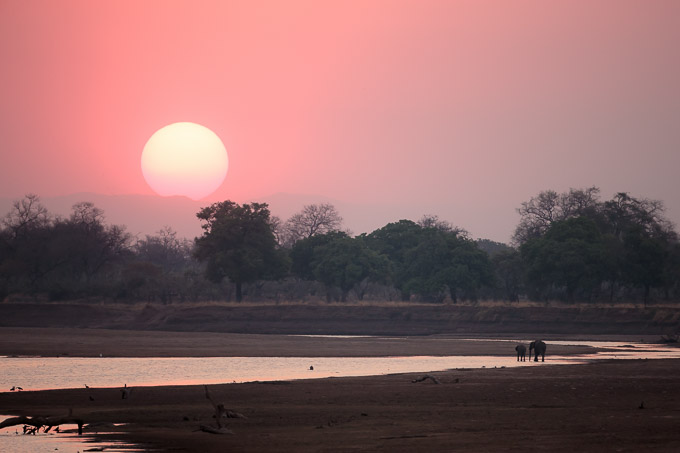
Setting out early the next morning (around 0530) we found a beautiful line of bull elepahnts approaching the river. Knowing they would cross, and having the luxury of being allowed to cross the main river ourselves, we quickly drove ahead of them and waited from them to arrive at the water’s edge.

The soft light and the reflections were stunning.
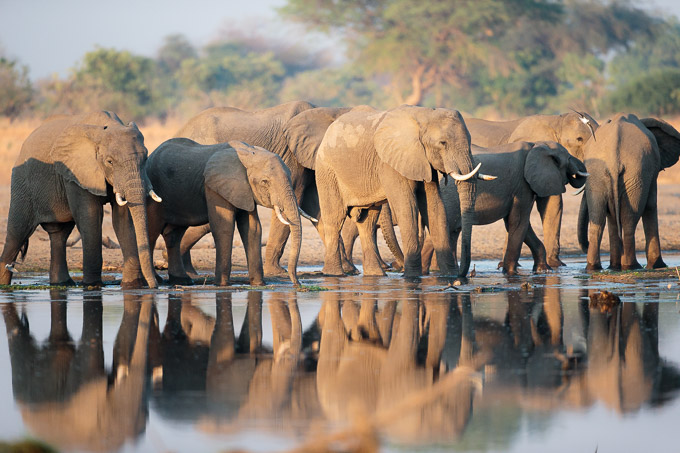
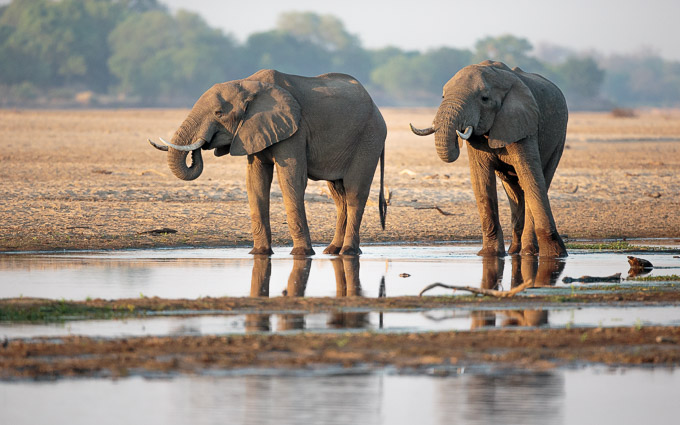
Almost as soon as the elephants had moved on, I picked up the sound of pukus alarming above us on the river bank. We followed the sound and I spotted a large leopard in a Sausage tree. He wasn’t too happy to see us and descended the tree, but didn’t rush off, allowing us some time to take photos of him in the morning light.
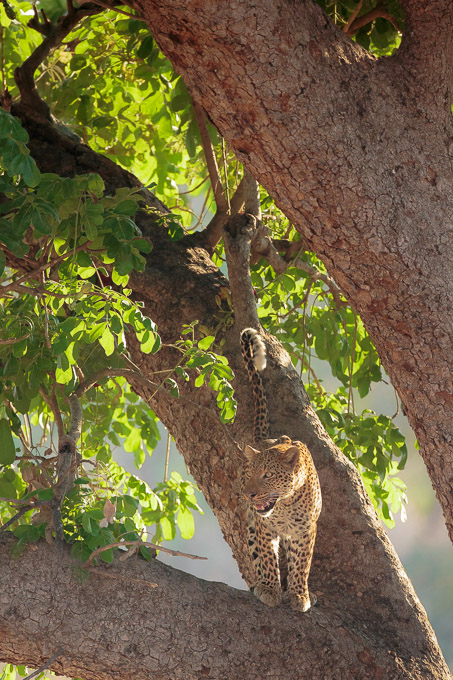
Returning to the river to photograph some hippos, we spotted a Sacred Ibis doing some yoga, and spent time watching it. I had a chance to discuss camera settings with my guests and get to know their level of camera knowledge so that I could tailor my suggestions to each of them. I therefore didn’t take many photos of the ibis, but I was glad to get one which shows the red underwing patch that becomes more prominent as the rainy season approaches.
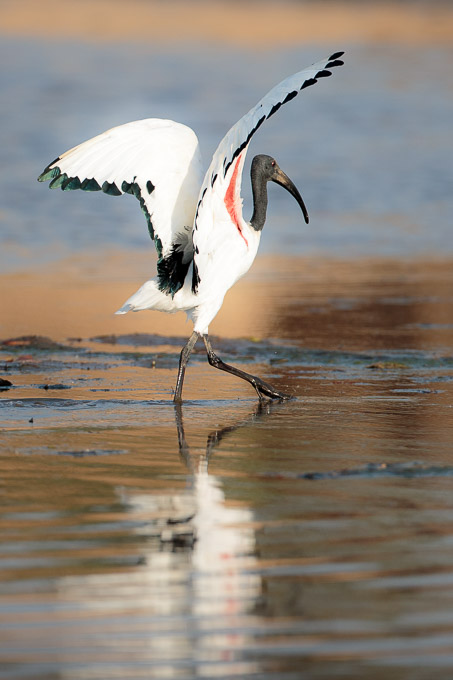
We moved on and found a small pride of lions late in the morning. There weren’t many photo opportunities so we concluded that we should return in the afternoon. Arriving late in the afternoon, we found only one of the pride remaining – one of the two smallest cubs resting on a termite mound. He seemed nervous (and good that he was as he was very vulnerable on his own) so we took some photos and left him alone.
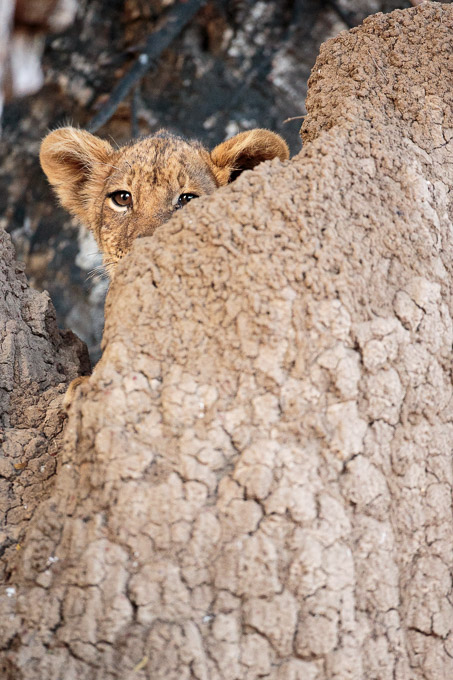
The rest of the pride had moved down onto the sand by the water’s edge in a very inaccessible place, so we didn’t have any photo chances. We decided to sit with them anyway in case they moved and gave us a chance, or in case they started to hunt. In fact, our patience was rewarded. The Hooded Vultures, who had been sitting on the sand with the lions to feed on their droppings, flew up into some dead trees at dusk. The Vultures made great silhouettes against the pink sky and we all took many shots of the characteristic shapes.
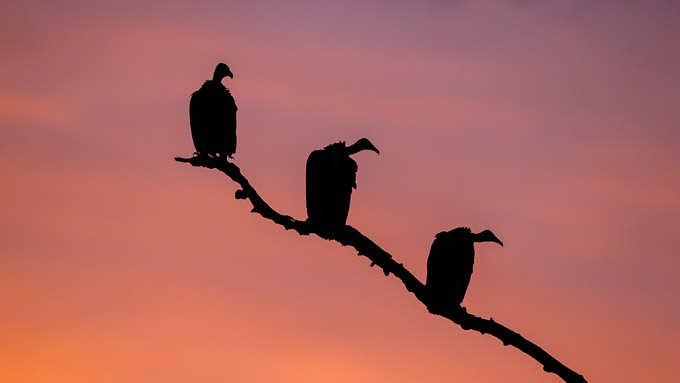
Very early the next morning, we found a bull elephant crossing the river in the pink morning light. Scattered waterbirds gave an interesting foreground as he looked for a way to climb up the other bank.
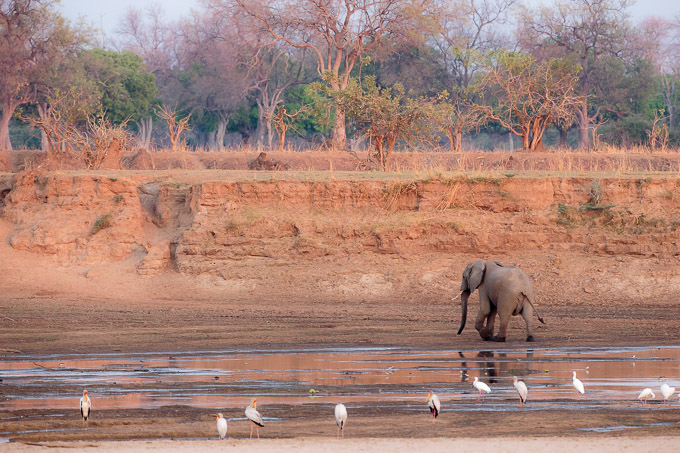
We spotted some lions across the river in the morning, when it was already too late to cross and photograph them. But we decided to head that way in the afternoon and it gave us some of the best shots of the trip. As we got close to where they had been resting, they were approaching us down the river bank, outlined in golden light.
The lionnesses were in hunting mode and there is nothing more impressive than a lionness on a mission.
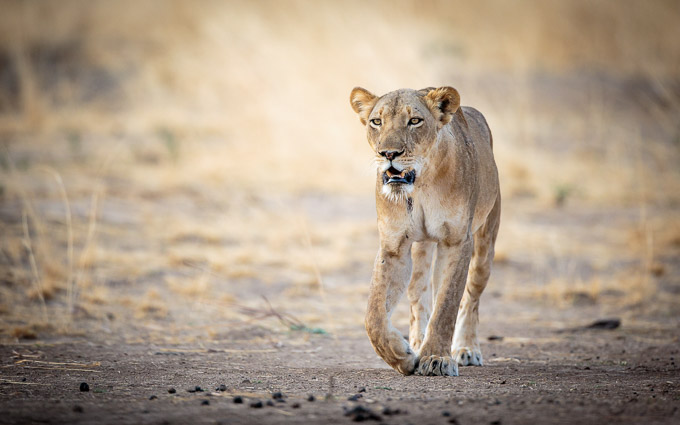
The two cubs were in playful mode – as always – and were harrassing the males at the back. One of the males snarled his displeasure at one point, but otherwise they were quite accommodating.
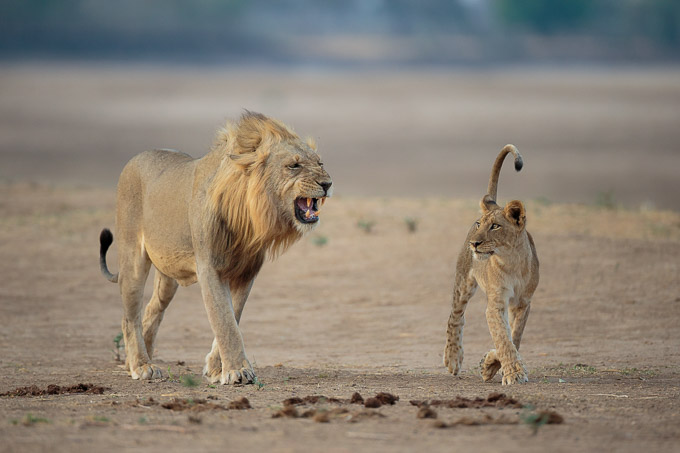
After a failed attempt at ambusing some antelope, they settled down to wait for sunset when their job would become much easier. We enjoyed playing with long-lens animal-scapes (as I call them) such as this one with a hippo causeway and a lionness.
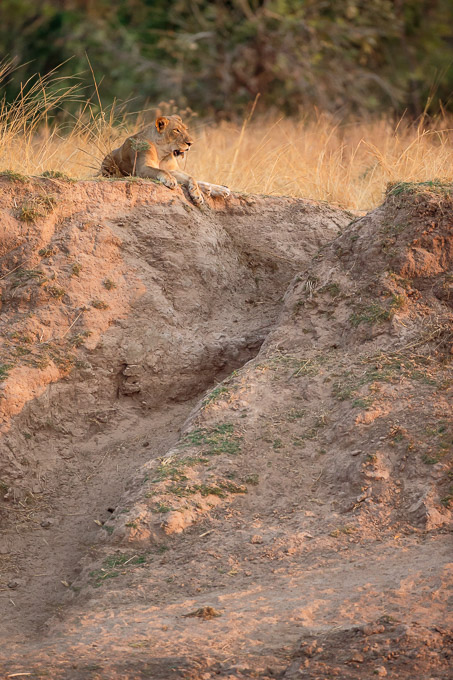
The lions didn’t make a kill in the early evening, so we left them to hunt, hoping to increase their chances by leaving them alone. It would give us a good opportunity to find them again in the morning.
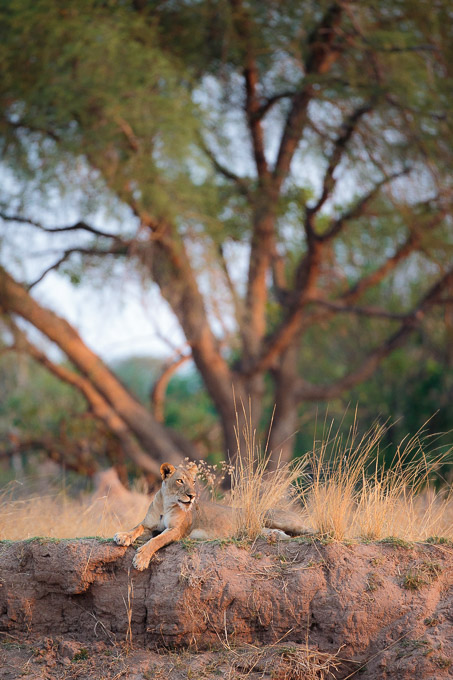
Hearing nothing in the night, we decided to go to the Hot Springs in the centre of the Nsefu area the next morning, hoping to find wild dogs and lions which are sometimes seen there. Sadly, they were elsewhere, but the bird life in the area was outstanding. We enjoyed Tawny eagles……
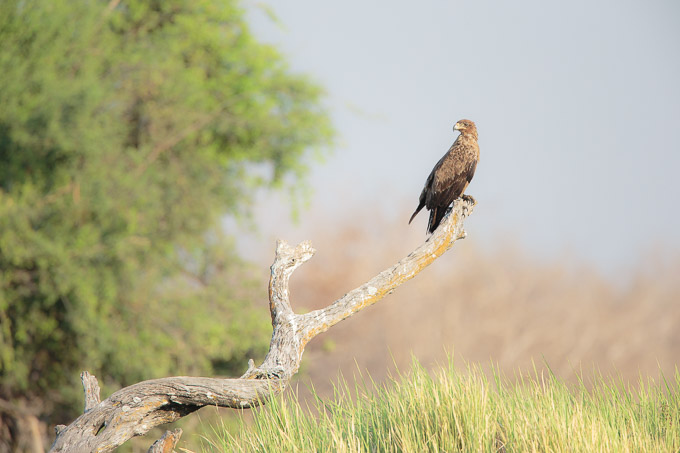
Cattle egrets….
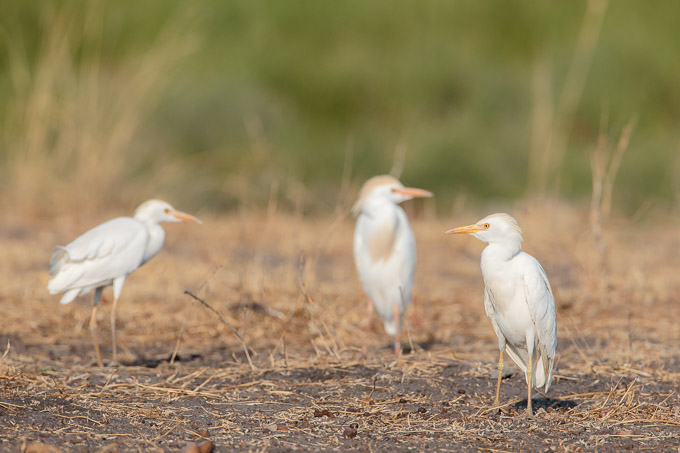
A Fish eagle coming in to land…..
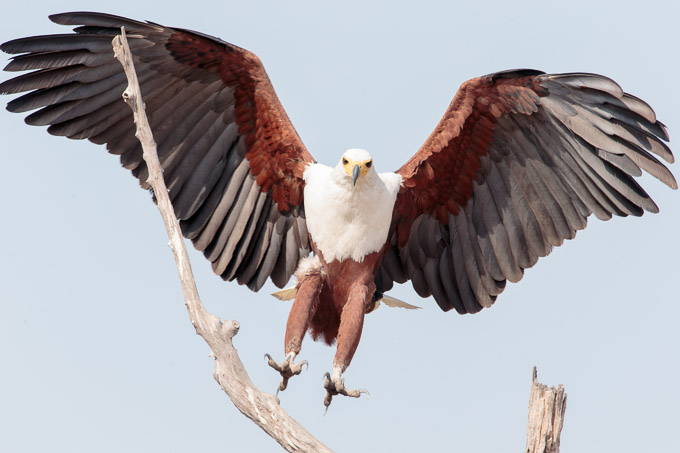
And a Martial eagle enjoying his meal of Francolin….

After that, I took the group to a spot where I know the Nsefu pride like to rest during the heat of the day. We found the two males and one of the females, but they were quite inactive since it was late in the morning. Agreeing to return in the afternoon, we set off to camp for lunch.
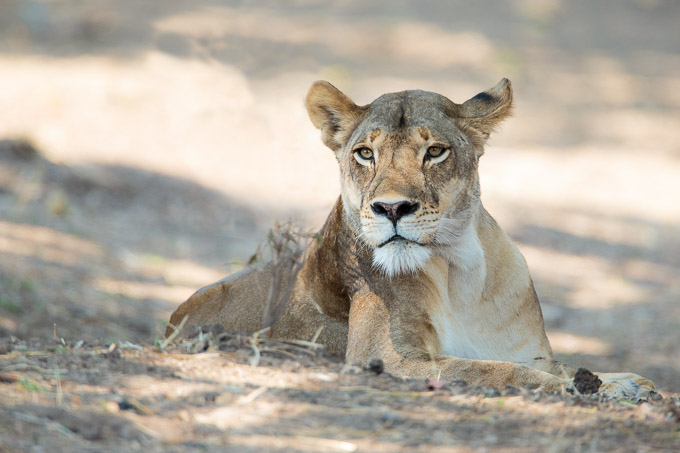
The afternoon gave us a serious dilemma; stay with an amazing group of 50 elephants that we found at the river crossing near camp…..
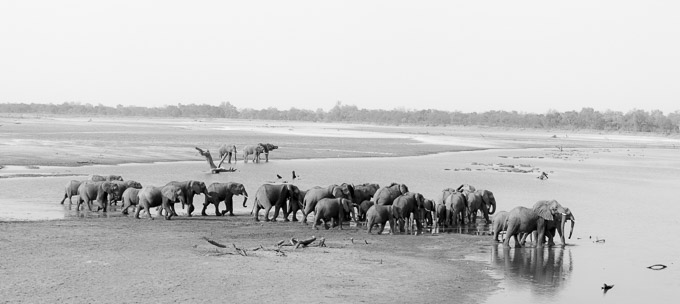
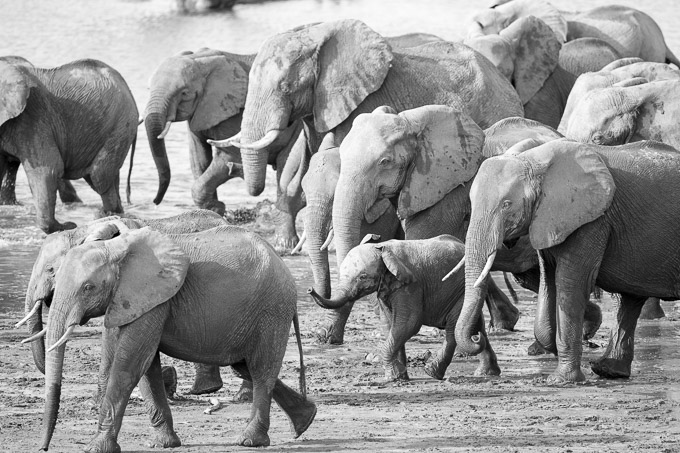
….or head back to the lions. There was a vote and the lions won. So we set off, having taken some shots of the beautiful massed herds of elephants at the water’s edge.
On the way to the lions, we took time to enjoy several sightings, including this elephant crossing a scenic gully….
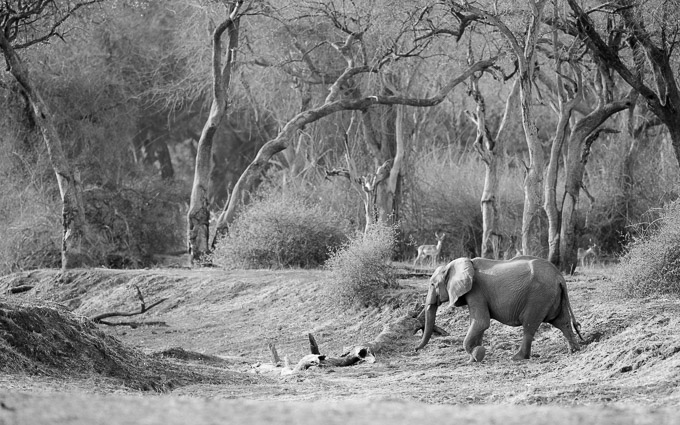
….and these hippos silhouetted against the golden water.
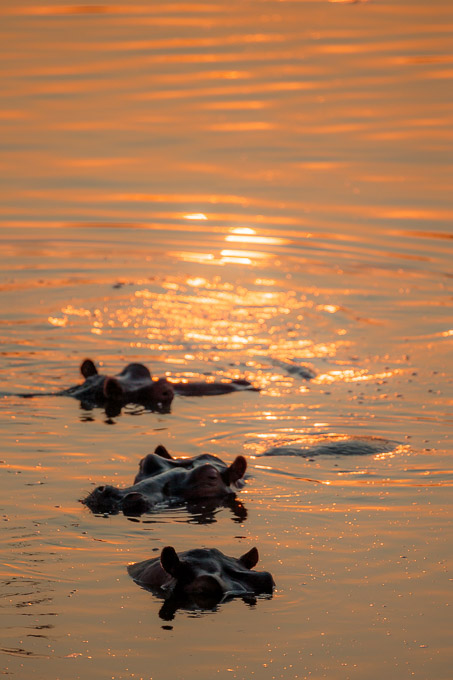
And then we reached the lions. A male and the female had moved off (perhaps they were mating in which case they would be permanently on the move) but the remaining male gave us outstanding opportunities; he watched us carefully in the low light.
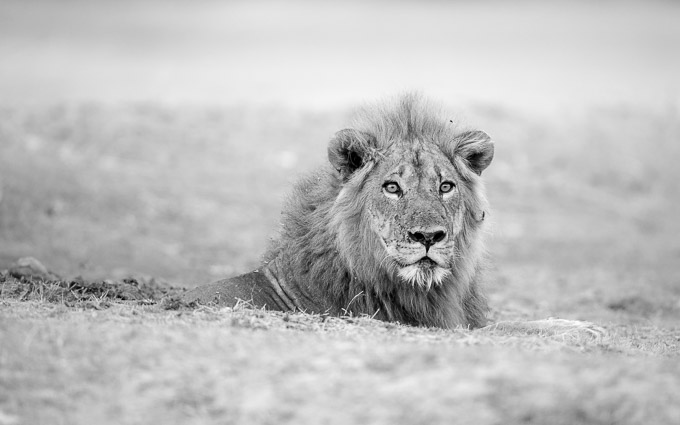
He tolerated a bit of side-lighting from another vehicle’s spotlight (one of only two occasions where we shared a sighting with any other vehicles in the whole week!)….
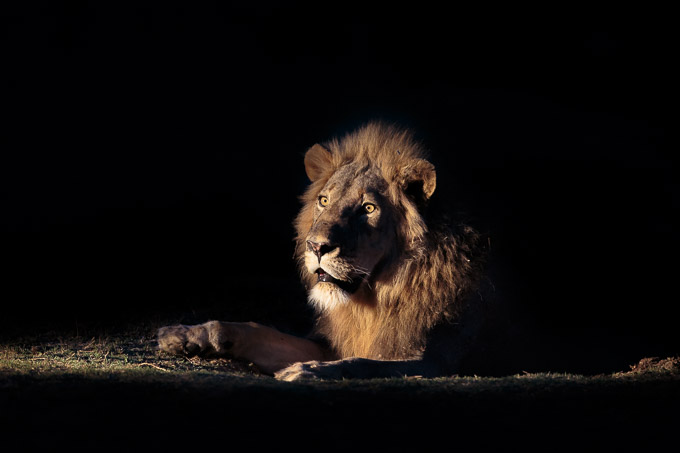
Out of nowhere, he gave us an almighty roar or communication call which shook us all and made all out neck hairs prickle! I tried to capture the concentration on his face when he called, but the light was too low and I didn’t want to use a spotlight at that point, so my shot was blurred. But I think it actually conveys his movement and expression well.
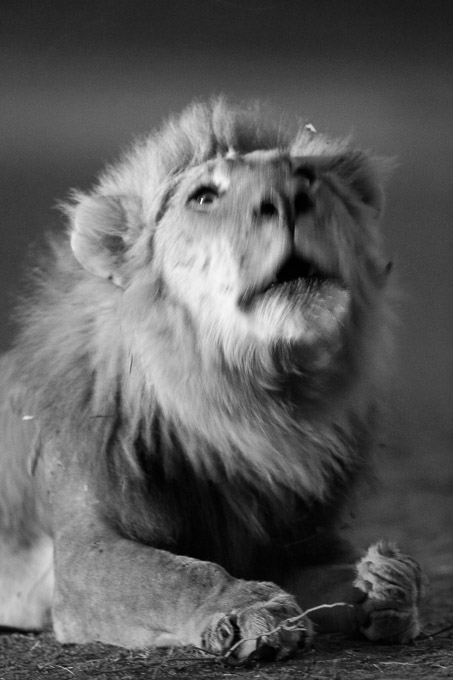
On the way back from that area in the evening, we found a dead buffalo with several hyaenas feeding on it…..
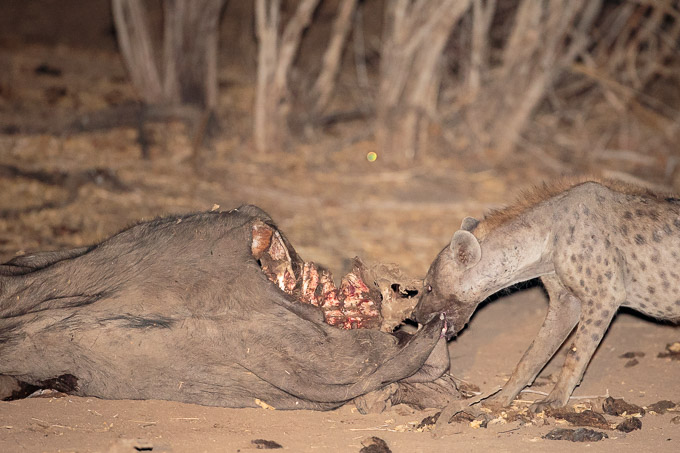
…and a porcupine who didn’t hang around – they rarely do!
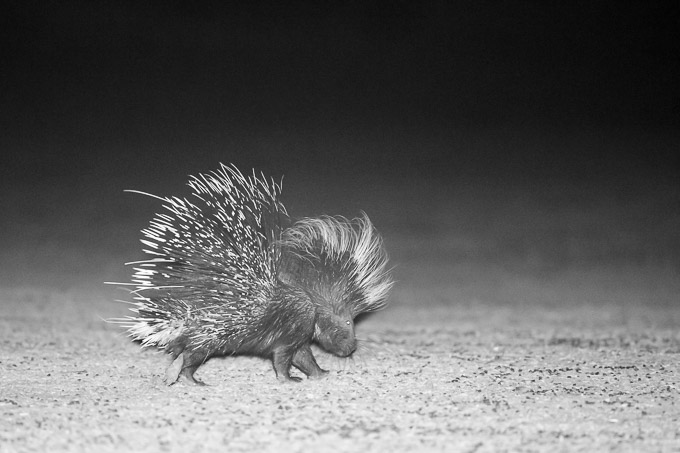
We stopped off at a well-used hyaena den and were rewarded with some stunning interaction between very young pups and the adults. This is the only active den that I know about in the Valley which is accessible by vehicle and has inhabitants who are prepared to let photographers approach. It is really a treat to see the activity at the mouth of the hole.
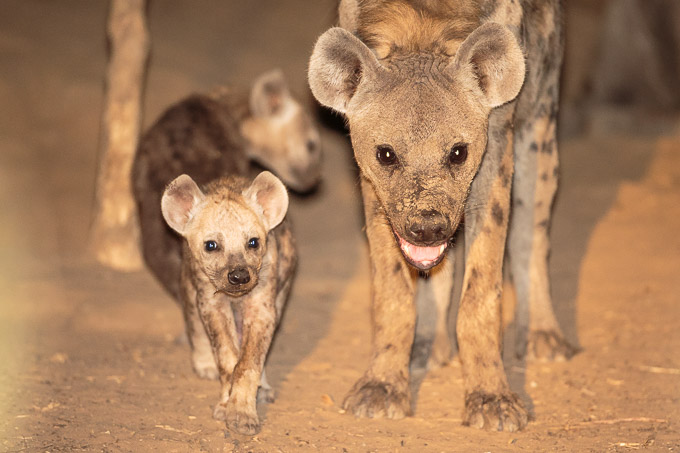
Two members of the group were very keen to see Owls while they were with us. On the next morning, we finally tracked one down – Verreaux’s Eagle Owl.
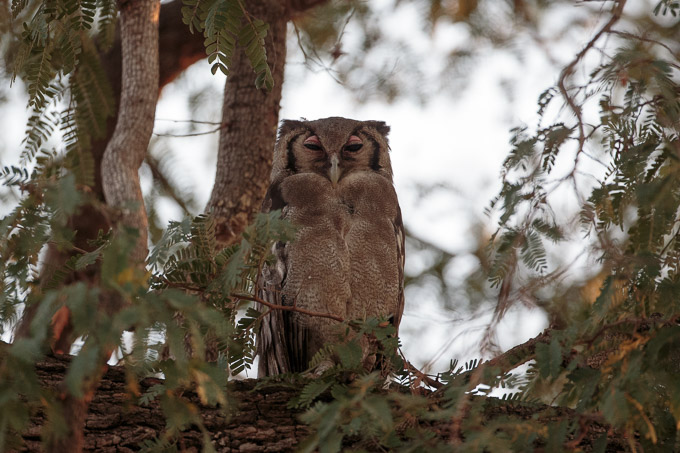
And while waiting for a huge herd of buffalo to come and drink, we practiced panning shots of impalas on the run.
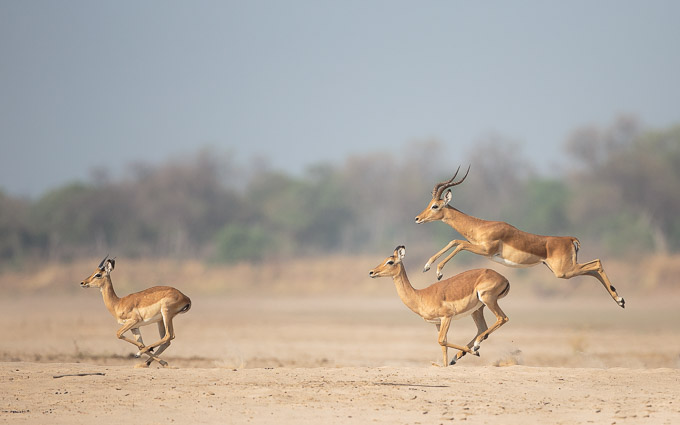
Eventually the buffaloes came down and gave us the best sighting of the week. 500+ head of buffalo thronging around the remaining water, with all the accompanying dust and noise, was truly memorable.
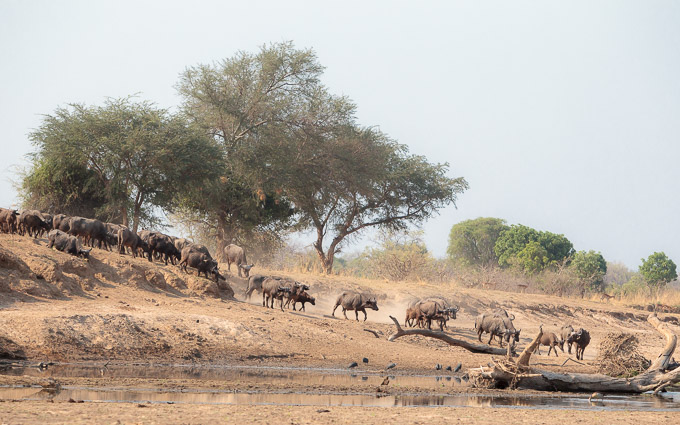
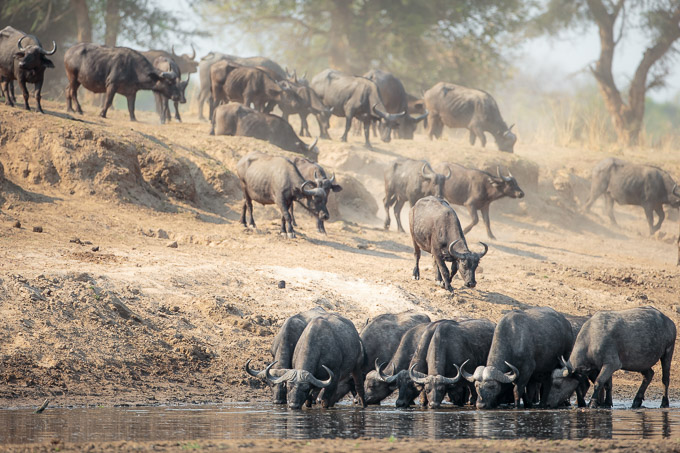
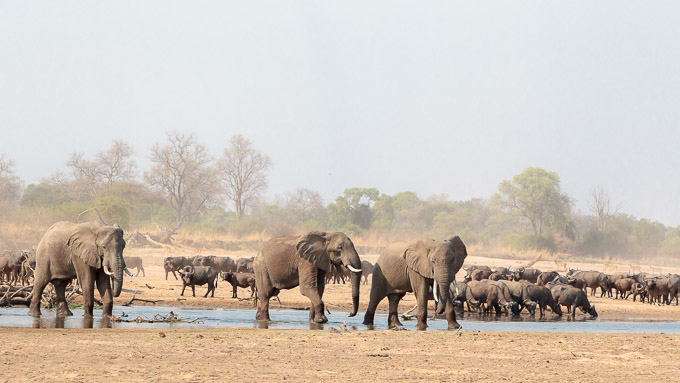
Later that afternoon, we decided to take it slowly, so while some sat in a Carmine bee-eater hide, others enjoyed some time photographing pukus from ground level. It gives a whole new perspective and they are often a little more alert, making them more rewarding subjects.
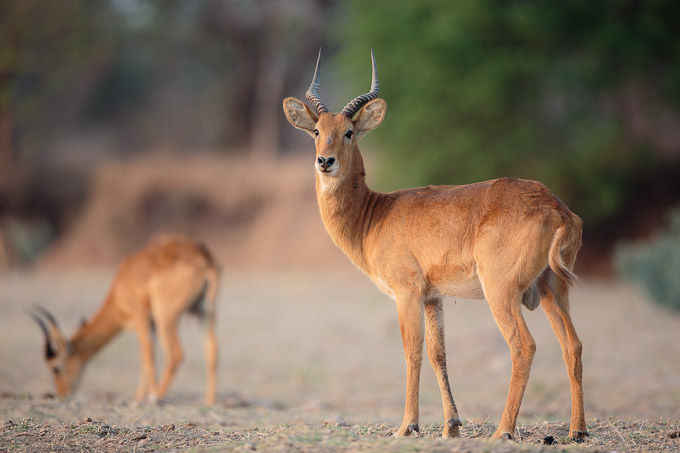
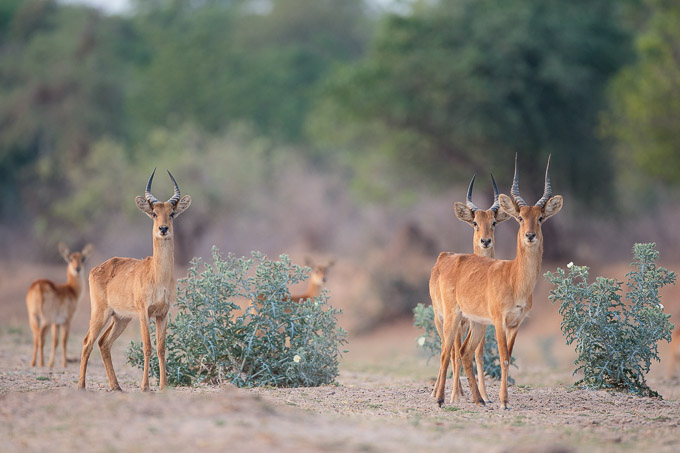
And as is often the case, it all came together on our last morning. We left camp to the sound of impala and baboon barks and quickly tracked down a trio of lion cubs who had been left to rest up while their mothers went to hunt.
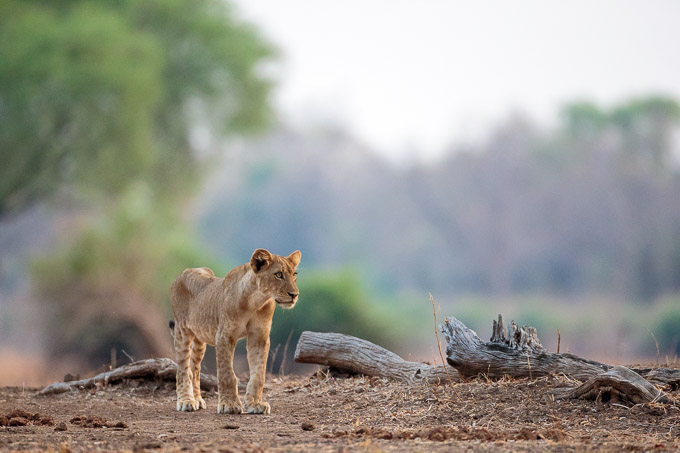
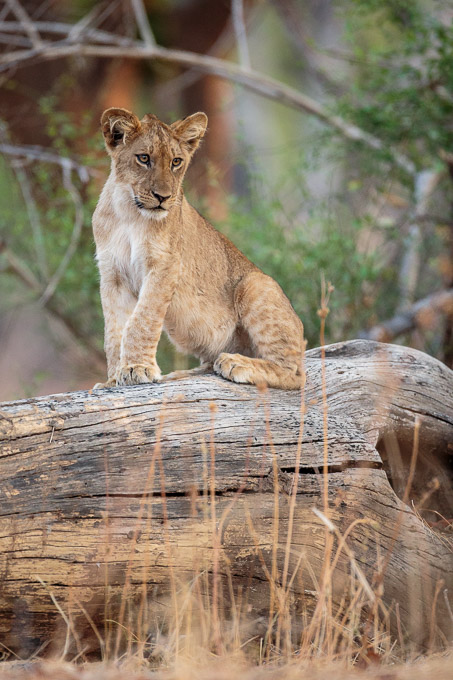
And then we found the small pride that we’d seen earlier in the week feeding on a freshly-killed warthog! As is so often the case, you can look so hard for sightings, and then on the last day, they all fall into your lap!

The lions were observed by a herd of elephants who came very close but didn’t bump them as they so often do!
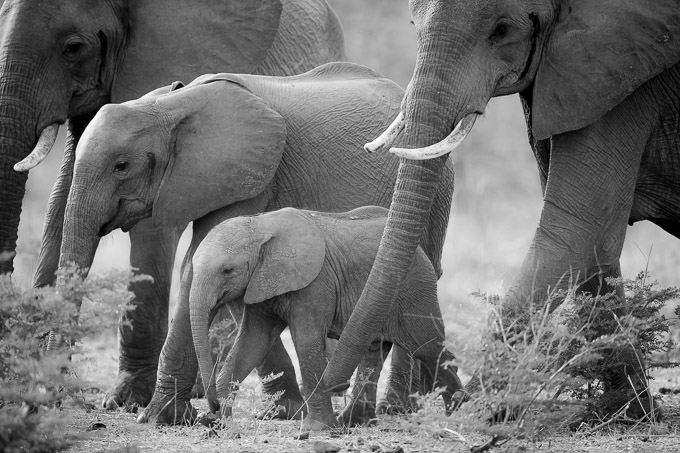
It was a stunning ending to a great trip, and certainly one I hope to repeat with AGT in the future. Seats will book fast so get in touch.
On the way back to camp, giraffes had come to bid us farewell and we watched their reflections come and go as the wind blew ripples across the water.




